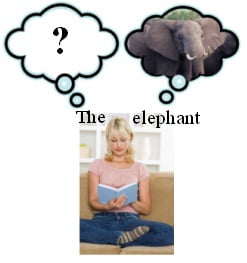Thinking Style
There are two basic kinds of learners: Verbal and Nonverbal.
How does thinking style play a role in learning?
Video courtesy of fellow Davis Dyslexia Facilitator, Karen LoGiudice of New England Dyslexia Solutions in MA. Used with permission.
Verbal Learners
Mainly think through the sound of words
NonVerbal Learners
Mainly think in pictures
Intelligence does not play a role in the distinction between learning styles.
It is simply a difference in learning and thinking styles.

Verbal learners
Mainly think through the sound of words. Thinking verbally consists of composing sound sentences, one word at a time, at about the same speed as speech. In their mind, they hear a voice speaking to them. They can only think as fast as they can speak! Picture thinkers speed is nearly incomprehensible—the gift! Verbal thought is linear and follows the structure of language.
Nonverbal learners
Mainly think in pictures.They identify words and objects by viewing them from infinite visual perspectives. They think with 3-dimensional, multi-sensory images that evolve and grow as the thought process adds more information or concepts. This thought process happens so much faster than verbal thinking that it is often subliminal – explaining why dyslexics are often unaware of errors and images. “Picture-thinkers” experience little, if any, internal “dialogue” sounds, therefore, reading through phonics is nearly impossible, always frustrating, and sometimes painful. Attempting to teach phonics to a picture thinker is often as impossible as trying to download a Microsoft program into an Apple device!


Thinking styles
Which style are you?
Are you a verbal thinker?
Are you a non-verbal thinker?
The Dyslexia Dilemma
A picture thinker can easily “picture a meaning” for words that represent objects and action verbs like: chair, pencil, run, and jump. However, they are unconsciously challenged when faced with certain abstract words like: the, was, if, and, were, in, on, as, or, that…and at least 209 others just like them (commonly known as “sight words”).
Those words are at the root of reading difficulties for a picture-thinker.
Why?
Consider, for a moment, that up to 60% of any written paragraph contains words that DO NOT allow a “picture thinker” to create a picture. Imagine, as a person who thinks in pictures, trying to obtain the real meaning of a paragraph when 60% of the words are words with which you cannot think!
You know how frustrating it is when a phone or device cuts out. Imagine this happening with all reading and listening at a level of 60%!
Give it a try!
Read the following passage and feel what happens to your comprehension as you read it.

Add disorientation into the mix and experience how much more confusing it can be:

What the passage really says!

See also characteristics of dyslexics for more information.
